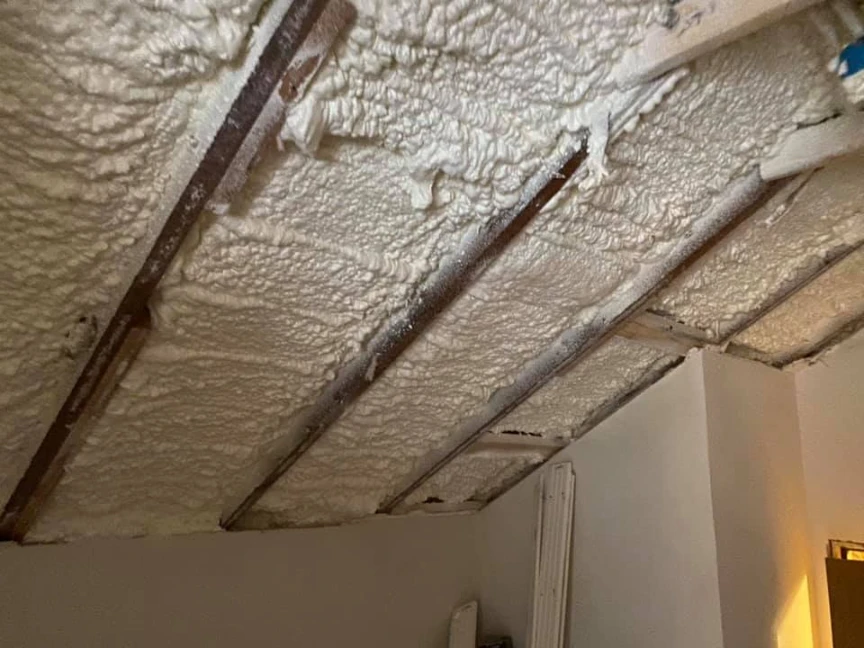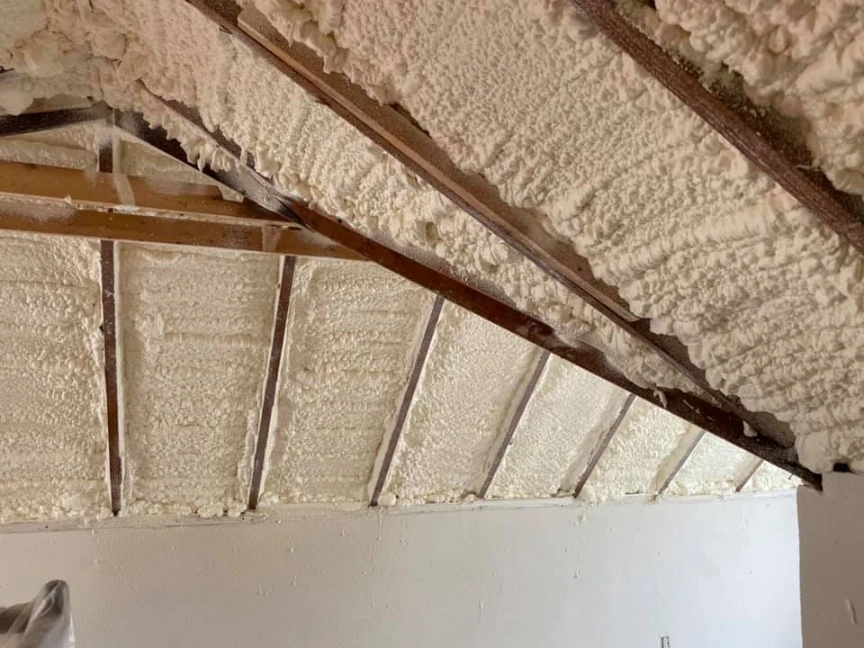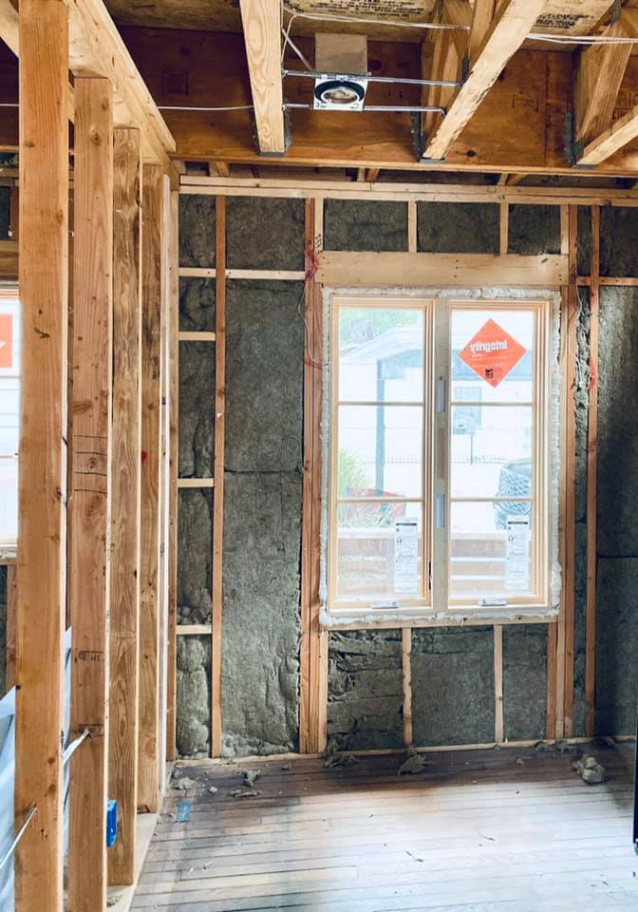Fixing an uncomfortable home often starts from the ground up, right in the crawl space. For property owners in Round Rock, improperly installed or inadequate crawl space insulation installation is a frequent source of high energy bills, poor indoor air quality, and moisture problems. The most common errors include using the wrong type of insulation for our humid climate, failing to air seal before insulating, and installing an ineffective vapor barrier. Other critical mistakes are placing insulation in the wrong location (floor vs. walls), ignoring existing moisture or mold issues, and leaving gaps that undermine the entire system’s performance.
Getting this right means more than just saving money; it’s about creating a healthier, more durable home. This guide breaks down the nine most prevalent mistakes seen in local properties and provides the correct methods to ensure your crawl space is an asset, not a liability. With years of experience addressing these specific issues in Central Texas, Stellrr Insulation & Spray Foam has seen firsthand how these errors can compromise a home’s structure and comfort.
Mistake 1: Ignoring Air Sealing Before Insulating
One of the biggest misconceptions is that insulation alone stops air movement. It doesn’t. Insulation’s primary job is to slow the transfer of heat, but it does little to block air leaks. Before any insulation is installed, all gaps, cracks, and holes in the subfloor and foundation walls must be sealed.
Air leaks from the crawl space can introduce moisture, dust, allergens, and pests into your living areas. According to the U.S. Department of Energy, sealing these leaks is a critical first step to improving a home’s energy efficiency. Without proper air sealing, conditioned air from your home can be sucked out, and unconditioned, humid air from the crawl space can be pulled in, forcing your HVAC system to work much harder.
Mistake 2: Using the Wrong Type of Insulation
Not all insulation is created equal, especially for the damp conditions common in a Round Rock crawl space. Choosing the wrong material can lead to failure in just a few years.
- Fiberglass Batts: This is the most commonly misused material. While inexpensive, fiberglass readily absorbs moisture. When it gets damp, it sags, loses its insulating R-value, and becomes a breeding ground for mold. It’s a poor choice for crawl space walls or rim joists in a humid environment.
- Closed-Cell Spray Foam: This is often the most effective solution. It acts as an insulator, air barrier, and moisture barrier all in one. It adheres directly to the surface, creating a continuous seal that doesn’t sag or absorb water.
- Rigid Foam Board: Another good option, rigid foam panels are water-resistant and provide a consistent thermal barrier. They must be carefully cut and sealed at the seams to be effective.
Comparing Common Crawl Space Insulation Materials
| Material | Water Resistance | Air Sealing Capability | R-Value (per inch) | Common Issues |
|---|---|---|---|---|
| Fiberglass Batts | Poor | Poor | R-2.9 to R-3.8 | Absorbs moisture, sags, attracts pests, supports mold growth. |
| Rigid Foam Board | Good to Excellent | Good (if sealed) | R-4 to R-6.5 | Seams must be meticulously taped to prevent air and moisture leaks. |
| Closed-Cell Spray Foam | Excellent | Excellent | R-6 to R-7 | Higher initial cost, requires professional installation. |
Mistake 3: Installing a Vapor Barrier Incorrectly
A vapor barrier (or vapor retarder) is a non-negotiable component of a healthy crawl space in Central Texas. It’s a thick plastic liner that covers the entire dirt floor to stop ground moisture from evaporating into the space.
Common errors include:
- Using thin, cheap plastic (under 10-mil) that tears easily.
- Not overlapping and sealing the seams properly.
- Failing to run the liner up the foundation walls and seal it.
- Leaving gaps around support piers.
A properly installed vapor barrier is the foundation of crawl space moisture control. Without it, even the best insulation can be overwhelmed by constant dampness rising from the ground.
Mistake 4: Insulating the Floor Instead of the Walls
This mistake stems from an outdated understanding of building science. Traditionally, crawl spaces were vented, and insulation was stuffed between the floor joists to separate the home from the “outside” air below. The problem is that this approach is notoriously difficult to do perfectly. It leaves plumbing, ductwork, and the subfloor itself exposed to moisture and temperature swings.
Modern building science, as explained by experts at the Building Science Corporation, favors creating an unvented, conditioned crawl space. This involves:
- Sealing the foundation vents.
- Installing a robust vapor barrier on the ground.
- Insulating the foundation walls and rim joists.
This method, known as crawl space encapsulation, effectively makes the crawl space part of the home’s conditioned envelope, leading to better energy performance and moisture control.
Bonus Tip: Before sealing vents for an encapsulated crawl space, check local building codes. Some jurisdictions may require specific ventilation or conditioning solutions to be added.

Mistake 5: Leaving Gaps and Compressing Insulation
For any insulation to work, it needs to be installed meticulously. With fiberglass batts, this means cutting them to fit snugly in each joist bay without gaps or compression.
When fiberglass is compressed, its R-value plummets. A thick batt crammed into a shallow cavity will perform worse than a thinner batt that fits properly. Gaps, even small ones, create thermal bridges where heat can bypass the insulation entirely, rendering it far less effective. This attention to detail is where many DIY jobs and low-bid contractors fail.
Mistake 6: Overlooking Rim Joists
The rim joist is the wooden board that sits on top of the foundation wall, forming the perimeter of the floor framing. It represents a significant source of heat loss in the winter and heat gain in the summer. A study from the U.S. Department of Energy highlights that floors over unconditioned spaces can account for a substantial portion of a home’s energy loss.
Leaving the rim joists uninsulated is like leaving a window open. Because they are directly exposed to outside temperatures, they need to be both air-sealed and insulated, ideally with spray foam or carefully fitted rigid foam board.
Mistake 7: Failing to Address Moisture and Mold First
Applying new insulation over a damp, moldy crawl space is a recipe for disaster. Insulation will trap moisture against the wooden subfloor and joists, accelerating rot and structural damage. Any existing water intrusion issues, from leaky pipes to poor grading outside the home, must be permanently fixed first.
All mold-contaminated materials, including old insulation, should be removed by professionals following proper safety protocols. The area must be thoroughly dried and treated before any new materials are brought in.
Bonus Tip: A dehumidifier is often a necessary component in an encapsulated crawl space to maintain a healthy relative humidity level, which the Environmental Protection Agency recommends keeping between 30% and 50% to prevent mold growth.
Mistake 8: Blocking Vents Improperly
If you have a traditional vented crawl space and are not moving to a fully encapsulated system, the vents must remain open to allow for air circulation. Simply stuffing insulation into the vents is a mistake. It stops airflow without creating a proper air seal, often trapping moisture inside. This can create stagnant, damp conditions that are ideal for mold growth and wood-destroying insects.
Mistake 9: Not Considering Pest Control
Crawl spaces are a common entry point for pests, from termites to rodents. Some insulation materials are more susceptible to pest infestation than others. Fiberglass batts can be easily torn apart by rodents for nesting material. Certain types of rigid foam can be tunneled through by termites.
An integrated approach is best. Ensure the crawl space is sealed from pests before insulation. Choose insulation materials that are pest-resistant, like closed-cell spray foam or borate-treated rigid foam.
Things to Consider Before You Insulate
Before starting a crawl space insulation project, property owners should evaluate a few key factors to determine the best approach.
- Current Condition: Is the crawl space wet, damp, or dry? Are there signs of mold, pests, or wood rot? These issues must be resolved first.
- Vented vs. Unvented: Decide whether to improve a traditional vented system or convert to a sealed, unvented (encapsulated) system. For the Round Rock climate, encapsulation is almost always the superior long-term solution.
- Budget: Costs can vary significantly based on the size of the crawl space, its condition, and the materials chosen. While spray foam has a higher upfront cost, its long-term performance and durability often provide a better return on investment.
- DIY vs. Professional: While some homeowners may be tempted to install fiberglass batts themselves, crawl space work is difficult and dirty. A mistake can be costly. Air sealing and spray foam insulation in Round Rock, TX require specialized equipment and expertise and should be left to qualified contractors.
Making the Right Choice for Your Crawl Space
Avoiding these nine common mistakes is essential for a successful crawl space insulation project. The process should always begin with controlling moisture and air leaks. Only then should you choose a high-performance, water-resistant insulation material and install it correctly, whether on the foundation walls for an encapsulated system or under the subfloor for a vented one. By taking a systematic approach, you can turn a problematic crawl space into a feature that contributes to your home’s efficiency, health, and comfort for years to come.
Get a Professional Assessment
Every home is different, and a one-size-fits-all solution rarely works for crawl spaces. Understanding the specific conditions under your property is the first step toward a lasting fix. For a detailed evaluation and clear answers about what your Round Rock home needs, contact the team at Stellrr Insulation & Spray Foam. Get in touch by calling (512) 710-2839 to discuss your property.
Sources
- Building Science Corporation – Provides in-depth analysis of vented versus unvented crawl space construction and building science principles.
- U.S. Department of Energy – Offers guidance on home weatherization, including information on air sealing and insulating floors over unconditioned spaces.
- Environmental Protection Agency – Offers a comprehensive guide on mold and moisture control in homes, including recommended humidity levels.
FAQS
What is the ideal R-value for a crawl space in Round Rock?
For crawl space walls in our climate zone, an R-value of R-13 to R-15 is generally recommended. If insulating the floor in a vented crawl space, R-19 is a common target.
Can I insulate my crawl space myself?
Installing fiberglass batts can be a DIY project, but it is challenging to do correctly without creating gaps or compression issues. Encapsulation using spray foam or rigid foam should be handled by a professional to ensure a continuous air and moisture seal.
How do I know if my current insulation is bad?
Visible signs include insulation that is falling down, wet or compressed, or showing signs of mold or pest infestation. High energy bills and cold floors in the winter are also strong indicators of a problem.
Does crawl space insulation help with allergies?
Yes. By air sealing and properly insulating, you reduce the amount of dust, mold spores, and other allergens that get pulled into your home from the crawl space, which can significantly improve indoor air quality.





